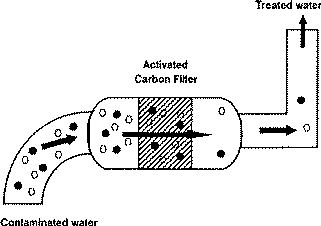Things to Consider Before Buying A Water Purifier
Things to Consider Before Buying A Water Purifier
Aqua Kent RO Malaysia is rated highly in the market for our range of quality products. After going through rigorous laboratory testing and quality checks, KENT has international certificates from both WQA and NSF USA. It’s no surprise that our customers have full confidence in buying our products. But what exactly makes a water purifier good at its job? What are all these fancy words about filters and the technology it comes with? Well, stay on top of the game by knowing the best solution for your household! Here are the 4 things to consider before buying a water purifier: Purification Technique, TDS, Storage Capacity, Water Source and Water Pressure.
1. The 3 Common Purification Techniques
Reverse Osmosis

- You’ve heard this phrase before: Reverse Osmosis (RO). It’s the most common process in water filters that almost every single one on the market is equipped with it. The RO process essentially removes large harmful particles through small-sized pores. It’s a multistage filtration method that uses high pressure to push water through a semi-permeable membrane that sifts out micro-organisms and minerals.It’s a common purification technique to filter solid contaminants. However, it also removes essential minerals in the process that makes water taste bland. That’s why Aqua Kent invented the Mineral RO Technology so minerals are retained even after a rigorous RO process.
- Ultraviolet Purifier (UV)
While RO is simply a membrane to catch solid particles, Ultraviolet Purifier (UV) works with a UV light to efficiently eliminate bacteria in your drinking water. Bacteria that could’ve possibly passed through RO’s membrane.This step destroys pathogens that RO can’t entirely eradicate. Best part? It retains necessary minerals and doesn’t contaminate the water. Did we mention it’s also eco-friendly for the environment?

- Next, Activated Carbon Filters are often used as to complement filters of other water purification techniques, such as the above. It uses activated carbon to absorb dangerous molecules in water. Every carbon particle has a large surface area that attracts impurities to stick to it, and prevent it from following with the purified water. Activated carbon filters particularly attract organic chemicals in water that make your water taste bad. These include fulvic acid and humic. Activated carbon filters are usually installed in industrial filtration systems where high manufacturing processes take place.

- Total Dissolved Solids
The next thing to consider is TDS (Total Dissolved Solids) in the water source. TDS consists of inorganic salts and substances. Basically, the higher the TDS in your water source, more filters are needed in a water purifier to remove these particles. TDS are still the minerals that contribute to a clean fresh water taste. However, among these dissolved solids are also harmful gases and impurities that are not safe to drink.

At Aqua Kent, our filters come with a Total Dissolved Solids Controller. Because the Reverse Osmosis process tends to remove all the TDS making water taste bland, our TDS Controller retains minerals from being filtered out. Remember that Aqua Kent never adds any minerals or chemical into your water! We always want to ensure that you’re drinking purified water that’s unadulterated.
3. Storage Capacity
Thirdly, consider the Storage Capacity of your water filter. Having a large storage capacity is important because it prepares purified water for your consumption in case of emergencies. You never know when there might be an accident that contaminates your local water source. When that happens, why pay more costs to buy bottled water from stores? Instead, invest in a water purifier with a high storage capacity so you won’t have to worry even in troubled times! Our product, Aqua Kent Maxx is capable of holding up to 7 liters of water when water supply is cut off. Water storage is essential in event of water disruptions, crisis and drought.

- Water Source
Depending on where you stay, the quality of water varies. There as so many types of water sources from bore wells, water reserves, ground water, springs and even rivers! This really helps in determining the type of water filter that is best suited for your household. KENT’s water purifiers are built with the Ultra Filtration (UF) process; it’s the final filter that water passes through to ensure it’s finally safe to drink. With KENT’s patented Mineral Technology, the double purification combines Reverse Osmosis (RO) and Ultra Violet (UV) / Ultra Filtration (UF) in a multistage filtration process.

So no matter which water source you’re getting from, water is always 100% purified and safe to drink.
- Water Pressure
Finally, most water purifiers need a Water Pressure between 5-41 PSI (pounds per square inch). Water pressure is caused primarily by the elevation between two points. If you live in a low water pressure area, consider a water purifier that comes with a booster pump. But if you stay at a higher area, water pressure would naturally be stronger due to gravity. The next time you set out to buy a water purifier, compare these criteria’s for the most worth it buy!

